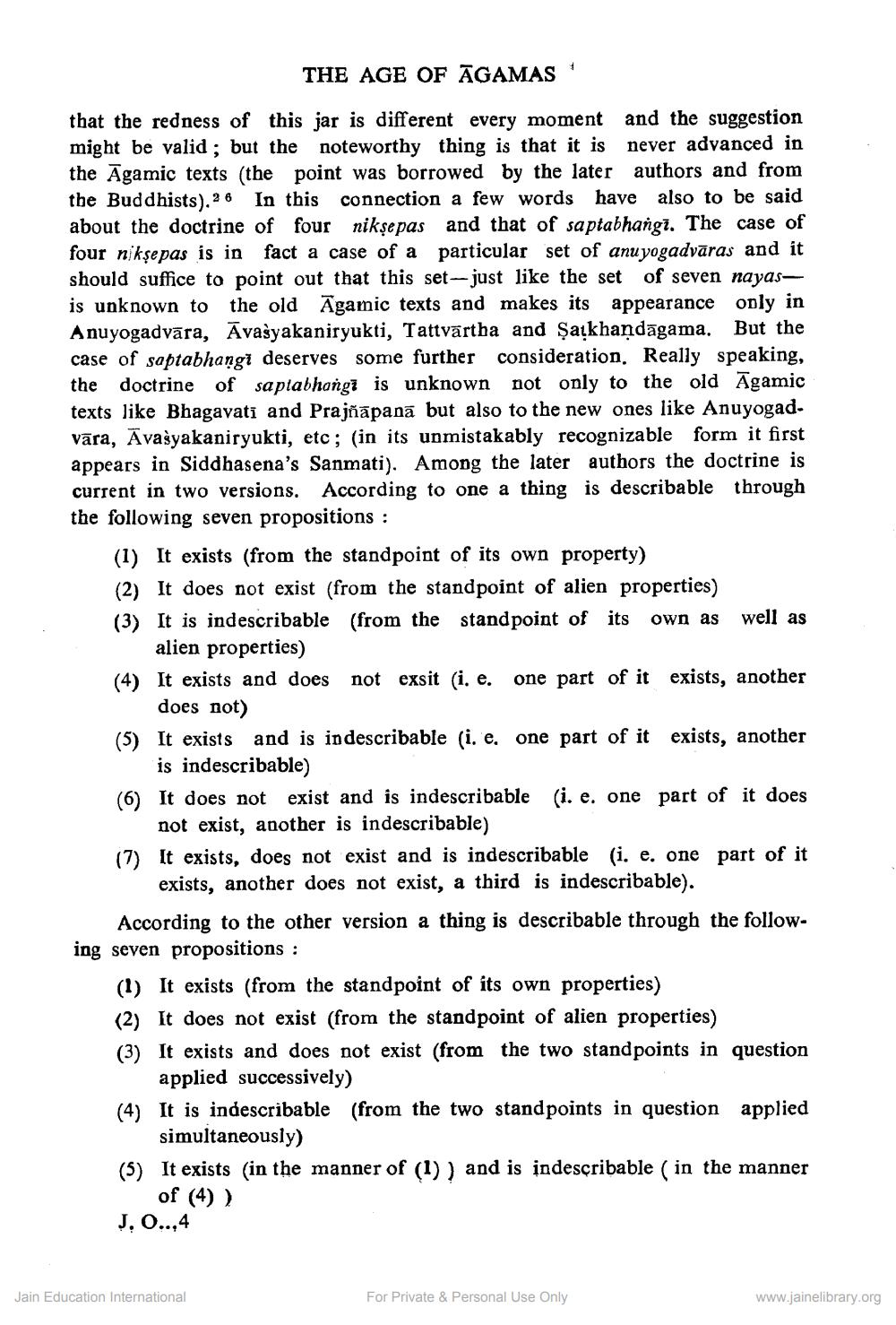________________
THE AGE OF ĀGAMAS
that the redness of this jar is different every moment and the suggestion might be valid ; but the noteworthy thing is that it is never advanced in the Āgamic texts (the point was borrowed by the later authors and from the Buddhists). 2 6 In this connection a few words have also to be said about the doctrine of four nikṣepas and that of saptabhangi. The case of four ni kşepas is in fact a case of a particular set of anu yogadvāras and it should suffice to point out that this set - just like the set of seven nayasis unknown to the old Āgamic texts and makes its appearance only in Anuyogadvāra, Āvašyakaniryukti, Tattvārtha and Şakhaņdāgama. But the case of saptabhangi deserves some further consideration. Really speaking, the doctrine of saplabhangi is unknown not only to the old Āgamic texts like Bhagavati and Prajñāpanā but also to the new ones like Anuyogad. Vāra, Āvašyakaniryukti, etc; (in its unmistakably recognizable form it first appears in Siddhasena's Sanmati). Among the later authors the doctrine is current in two versions. According to one a thing is describable through the following seven propositions :
(1) It exists (from the standpoint of its own property) (2) It does not exist (from the standpoint of alien properties) (3) It is indescribable (from the standpoint of its own as well as
alien properties) (4) It exists and does not exsit (i. e. one part of it exists, another
does not) (5) It exists and is indescribable (i. e. one part of it exists, another
is indescribable) (6) It does not exist and is indescribable (i. e. one part of it does
not exist, another is indescribable) (7) It exists, does not exist and is indescribable (i. e. one part of it
exists, another does not exist, a third is indescribable) According to the other version a thing is describable through the following seven propositions :
(1) It exists (from the standpoint of its own properties) (2) It does not exist (from the standpoint of alien properties) (3) It exists and does not exist (from the two standpoints in question
applied successively) (4) It is indescribable (from the two standpoints in question applied
simultaneously) (5) It exists in the manner of (1) ) and is indescribable ( in the manner
of (4) ) J, O.., 4
Jain Education International
For Private & Personal Use Only
www.jainelibrary.org




